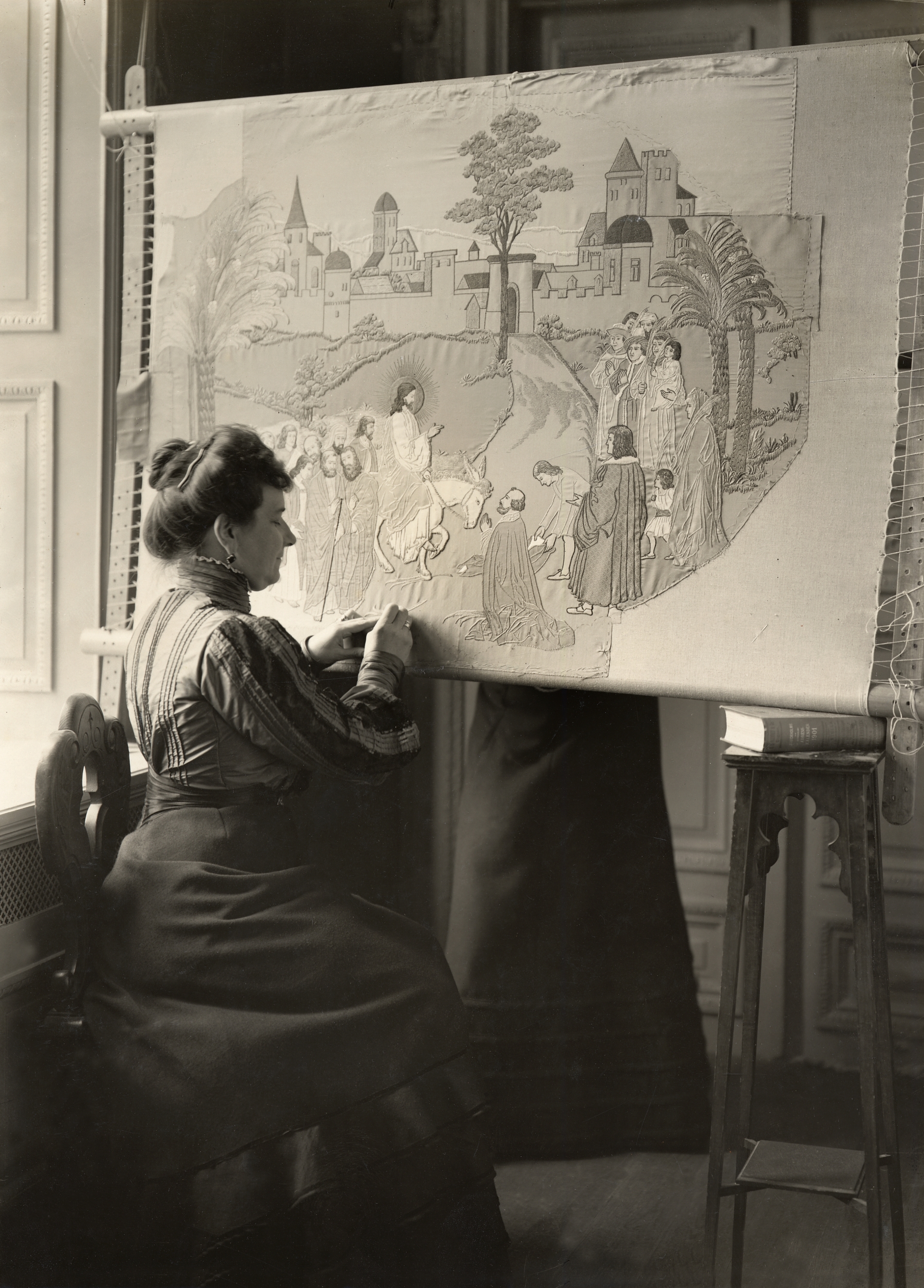Mimmi Lundström-Börjesson was a textile artist and a co-founder of Licium textile workshop.
(Mimmi) Emilie Lundström-Börjesson was born in Byske in 1857. She was the daughter of Emilie von Hedenberg and Nils Lundström, owner of an ironworks. She was brought up at a manor house near Piteå. The family numbered eleven children, one of whom later became a well-known artist, namely Nils Emil Lundström. On the death of Mimmi Lundström-Börjesson’s father in 1878 her mother moved the family to Stockholm.
Mimmi Lundström-Börjesson married Sven Börjesson when she was 19. Her husband passed away in 1895, leaving her a widow with three children for whom she was the sole provider. She had no career and no qualifications. Mimmi Lundström-Börjesson’s mother had taught her how to embroider when she was a child and this skill not only served as her route out of poverty, it later became her main source of income. In 1893 Mimmi Lundström-Börjesson got in touch with Handarbetets Vänner who invited her to send in a sample of her embroidery. This immediately led to her being invited to work for the association as an embroiderer. Mimmi Lundström-Börjesson then worked at Handarbetets Vänner until 1904, embroidering patterns which had been created by the leading Swedish pattern designers of the era, including Prince Eugen, Gunnar Wennerberg, Sofia Gisberg and Maja Sjöström. Although these artists were accomplished at their skill the work of an embroiderer by no means simply involved copying a template. In fact the quality of the finished product lay in the hands and in the eyes of the embroiderer and Mimmi Lundström-Börjesson was abundantly skilled. Indeed embroidery gradually began to enjoy a rise in value and became viewed as an important element within an ideal where all parts were equally important and had to work together. Mimmi Lundström-Börjesson’s esteem at Handarbetets Vänner resulted in her election onto the association board, where she remained a member for several years.
In 1904 Handarbetets Vänner was subjected to a major schism which resulted in the departure of its director, Agnes Branting and several colleagues. Agnes Branting is usually named as the founder of Licium textile workshop but Mimmi Lundström-Börjesson was in fact also a co-founder. The new workshop soon played a major part within Swedish liturgical textile art. During Mimmi Lundström-Börjesson’s time at the workshop it numbered around 50 active members at its peak. Initially the enterprise was based at Mimmi Lundström-Börjesson’s apartment at Lilla Vattugatan 24 until larger and more suitable premises were available. Mimmi Lundström-Börjesson not only organised the workshop activities but she also continued to produce some of the most demanding elements of commissions. Several major works have been attributed to her, including the 1902 tapestry which hangs in the royal box in Stockholm’s German church. Major pieces like that were never just created by one person but rather the result of several embroiderers working simultaneously. There is uncertainty about which exact parts of this tapestry Mimmi Lundström-Börjesson produced but it is beyond doubt that she was responsible for several pelicans which decorate vestments and antependia belonging to Stockholm’s churches.
Licium contributed artwork to the 1909 Stockholm exhibition. Some of the displayed textiles were subsequently shown in Budapest, and Mimmi Lundström-Börjesson travelled with Agnes Branting to view them in person. Mimmi Lundström-Börjesson retired in 1918, after which she took on the task of teaching all her young female relatives to embroider.
Föreningen för Svensk Hemslöjd (Swedish Handicraft Association) established a stipend in 1994, which was paid out from the trust set up in honour of Mimmi Lundström-Börjesson. This stipend is awarded to practising textile artists, for training purposes or for carrying out research or development projects.
Mimmi Lundström-Börjesson died in Stockholm in 1953, shortly before her 96th birthday.












